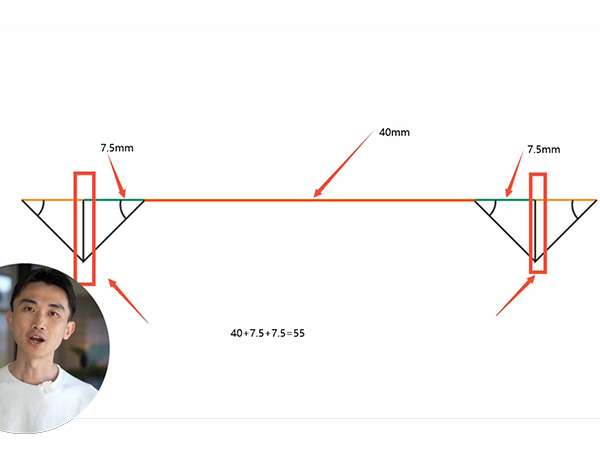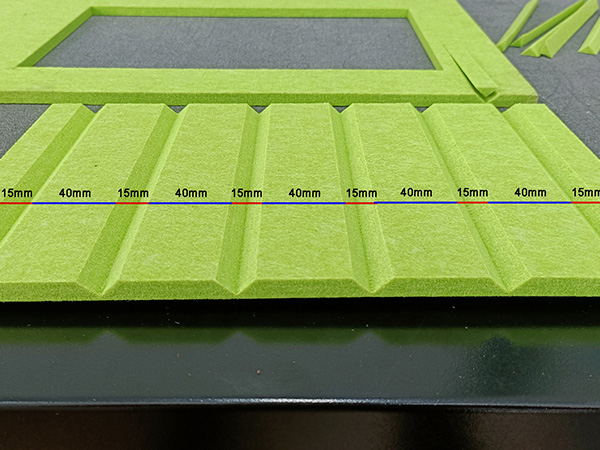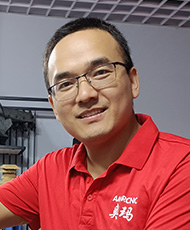In the world of acoustic design, the precision in crafting materials can make or break the effectiveness of sound absorption. Grooved polyester fiber acoustic panels, known for their excellent sound-absorbing properties and aesthetic appeal, present a unique challenge in manufacturing. Why? Because achieving that perfect groove requires a tool capable of meticulous accuracy and adaptability. Enter the oscillating knife cutting machine – a game-changer in the realm of precision cutting.
As an engineer at AMOR CNC, I’ve spent countless hours mastering the art of precision cutting. Let me guide you through the three key steps to transform polyester fiber into acoustically perfect, grooved panels using our state-of-the-art oscillating knife cutting machine.

Why Use an Oscillating Knife Cutting Machine?
The oscillating knife technology is not just about cutting, can also be used for grooving, marking, or punching holes.
It’s about creating with precision. It offers unparalleled accuracy, making it ideal for complex designs like grooved acoustic panels.
Its adaptability allows for cutting a diverse range of materials, but when it comes to polyester fiber, its capabilities truly shine.

Step 1: Preparing Your Design
The journey to realizing perfect grooved panels begins with a design. This isn’t merely about drawing lines; it’s about envisioning the acoustic performance and aesthetic you desire.
Now, the goal is to achieve grooves with a width of 15mm and a spacing of 40mm between two grooves. How should we design it?
Start by drawing a straight line in CAD to represent one groove.
To ensure a 40mm distance between grooves, observe this diagram. The distance should be calculated as 40+7.5+7.5=55mm. Thus, we array copy the line by 55mm.

Step 2: Setting Up the Oscillating Knife Cutting Machine
Now, it’s showtime for the machine. But first, setup is key. Adjusting the machine settings to suit the specific polyester fiber material is an art in itself.
Common Mistakes
You might think the process involves using CAD to draw two lines spaced 15mm apart and then array copying them with a 40mm distance, right? Well, that’s not correct.
So, what is the correct method?
To achieve a groove width of 15mm, the correct cutting depth must be set. But what should this depth be?
In CAD, for a groove width of 15mm at a 45° angle, the depth should be 7.5mm.

On the machine’s control panel, select ‘Adjust’ and switch to operation mode SP3—V cut.
Adjust the blade descent so it just touches the material surface and save the setting by clicking ‘√’.
Set the data to 5 and press ‘+’ once; set to 1 and press ‘+’ twice; finally, set to 0.1 and press ‘+’ five times to complete the depth setting.

Step 3: The Cutting Process
With the design ready and the machine set up, we embark on the cutting process. This isn’t just about feeding the material into the machine; it’s a ballet of technology and material.
After obtaining the DXF formatted design, optimize it in ‘Xiao’ software by setting the straight line operation to SP3 and the cutting outline to SP4 before sending it to the machine.
With the material properly placed, start the machining process.
After the Cut: Finishing and Quality Control
The cutting might be done, but our work isn’t over. Finishing touches and quality control are what elevate a good product to a great one. Inspecting each panel for uniformity and ensuring the grooves are flawlessly executed is essential. Any imperfections? Back to the drawing board, or rather, the cutting table.
Finished, measure the grooves to confirm a width of 15mm and a spacing of 40mm.
Perfect! Have you learned the technique?

Conclusion
The journey from a raw piece of polyester fiber to a finely grooved acoustic panel is filled with precision, technology, and a bit of my personality. With the oscillating knife cutting machine, the possibilities are limitless. Embrace the technology, and let’s create not just panels, but pieces of art that resonate with sound and style.
This exploration into the capabilities of oscillating knife cutting machines for producing grooved polyester fiber acoustic panels underscores the fusion of technology, expertise, and creativity. It’s a journey that transforms a simple material into a masterpiece of acoustic design, showcasing the innovative spirit at the heart of AMOR CNC.



